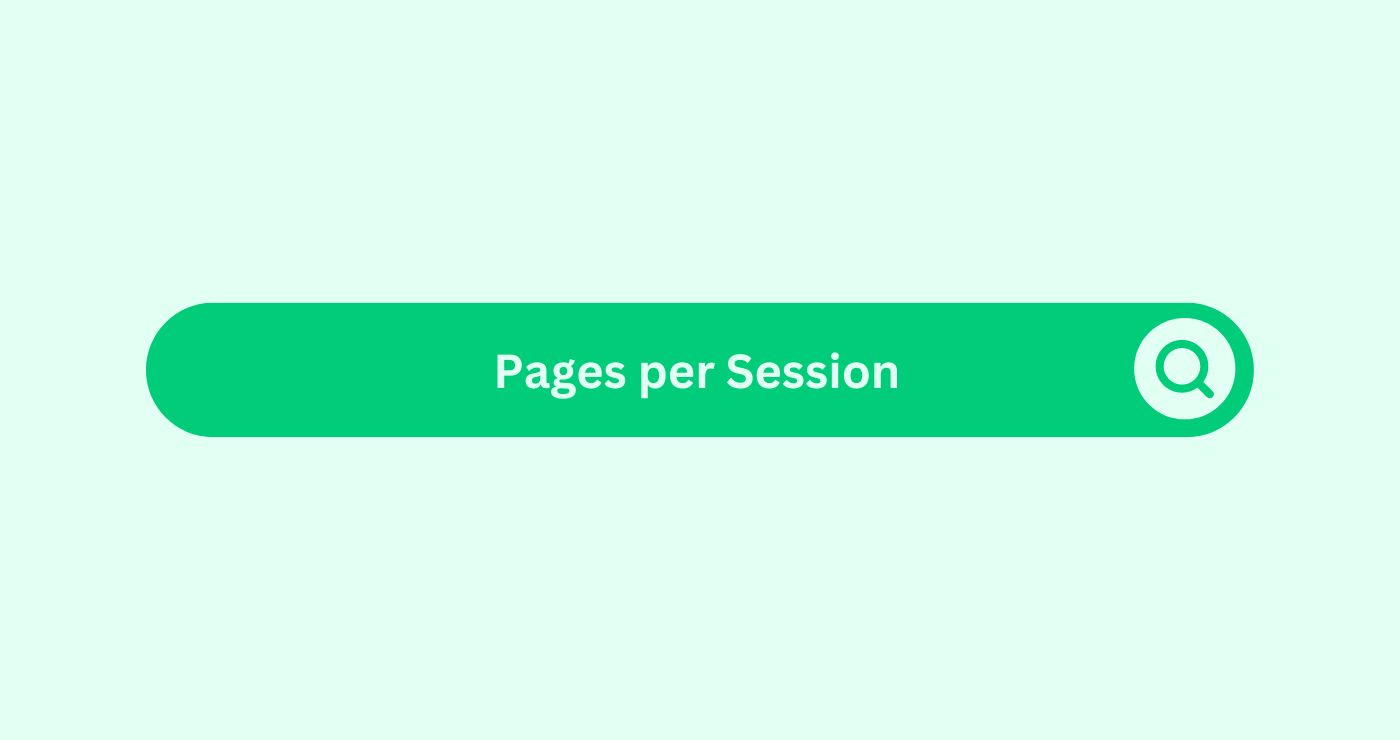Definition
Pages Per Session (PPS) is a crucial metric in SEO that gauges user engagementDefinition Engagement in content marketing refers to the deg... on your website. It reflects the average number of web pages a visitor browses during a single visit (session). This metric provides valuable insights into user behavior, content effectiveness, and ultimately, your website’s SEO performance.
How You Can Use Pages Per Session
Imagine you run an e-commerce store selling sporting equipment. A high PPS indicates visitors are exploring various product categoriesDefinition Categories, in the context of SEO and digital mar..., suggesting they’re interested but haven’t found the perfect item yet. This could be due to a lack of product information or unclear navigation. Analyzing PPS alongside other metricsWhat are Metrics in the context of SEO? Metrics in SEO refer... like bounce rateDefinition Bounce Rate in social media marketing refers to t... and average session duration can help pinpoint areas for improvement.
Calculating Pages Per Session
The formula for PPS is straightforward:
Total Pageviews / Total Sessions = Pages Per Session
Most website analyticsDefinition In SEO, analytics involves collecting, measuring,... platforms, like Google AnalyticsDefinition In SEO, analytics involves collecting, measuring,..., will readily display this metric within their reports.
5 Key Takeaways
- Higher PPS indicates deeper user engagementDefinition Engagement in content marketing refers to the deg.... Users browsing more pages suggests they find your content interesting and relevant.
- Low PPS can signal navigation issues or irrelevant content. Analyze user behavior to identify areas for improvement.
- PPS varies by website type. E-commerce sites naturally have higher PPS compared to blogs with focused content.
- Optimize content and internal linkingWhat is Internal linking? Internal linking refers to the pra... to encourage exploration. Make it easy for users to discover related pages.
- Consider PPS alongside other metricsWhat are Metrics in the context of SEO? Metrics in SEO refer... for a holistic view. Bounce rateDefinition Bounce Rate in social media marketing refers to t... and conversion rateDefinition Conversion Rate in the SEO space refers to the pe... can offer additional context.
FAQs
What is a good Pages Per Session?
There's no one-size-fits-all answer. It depends on your website type and goalsIn the SEO space, "Goals" refer to specific, measurable obje.... Generally, 3-4 PPS is considered good, but even 2-3 can be positive depending on your niche.
How can I increase Pages Per Session?
Optimize internal linkingWhat is Internal linking? Internal linking refers to the pra...: Make it easy for users to discover relevant content.
Create high-quality, engaging content: Informative and valuable content keeps users interested.
Improve website navigation: Ensure users can find what they need easily.
Does Pages Per Session directly impact SEO?
While not a direct ranking factor, PPS is an indicator of user experience, which Google prioritizes. Higher PPS shows engaged users, potentially leading to better rankings.
How is Pages Per Session different from bounce rate?
Bounce rateDefinition Bounce Rate in social media marketing refers to t... measures the percentage of visitors who leave after viewing only one page. PPS goes beyond initial page views, indicating how many pages users explore during a session.
Can Pages Per Session be influenced by external factors?
Yes, factors like website loading speed and mobile-friendliness can impact PPS. Ensure a smooth user experience across all devices.
Should I track Pages Per Session for different audience segments?
Absolutely! Segmenting your audienceDefinition The term "Audience" refers to the group of indivi... by demographicsDefinition Email demographics provide statistical data on su... or trafficDefinition In the context of SEO (Search Engine Optimisation... source can reveal variations in PPS, helping you tailor content and navigation for specific user groups.
How often should I track Pages Per Session?
Monitor PPS regularly to identify trends and track the effectiveness of website optimization efforts. Weekly or bi-weekly monitoring is a good starting point.
Can Pages Per Session be misleading?
Yes. If your website has a lot of shallow content with minimal depth, high PPS could be misleading. Focus on creating informative and engaging content that encourages deeper exploration.
What other metrics should I consider alongside Pages Per Session?
Bounce rateDefinition Bounce Rate in social media marketing refers to t..., average session duration, and conversion rateDefinition Conversion Rate in the SEO space refers to the pe... provide additional context for understanding user behavior.
How can I improve content based on Pages Per Session data?
Analyze which pages have high and low PPS. Focus on improving low-performing pages with better internal linkingWhat is Internal linking? Internal linking refers to the pra..., optimizing content for user intent, or adding visuals.




